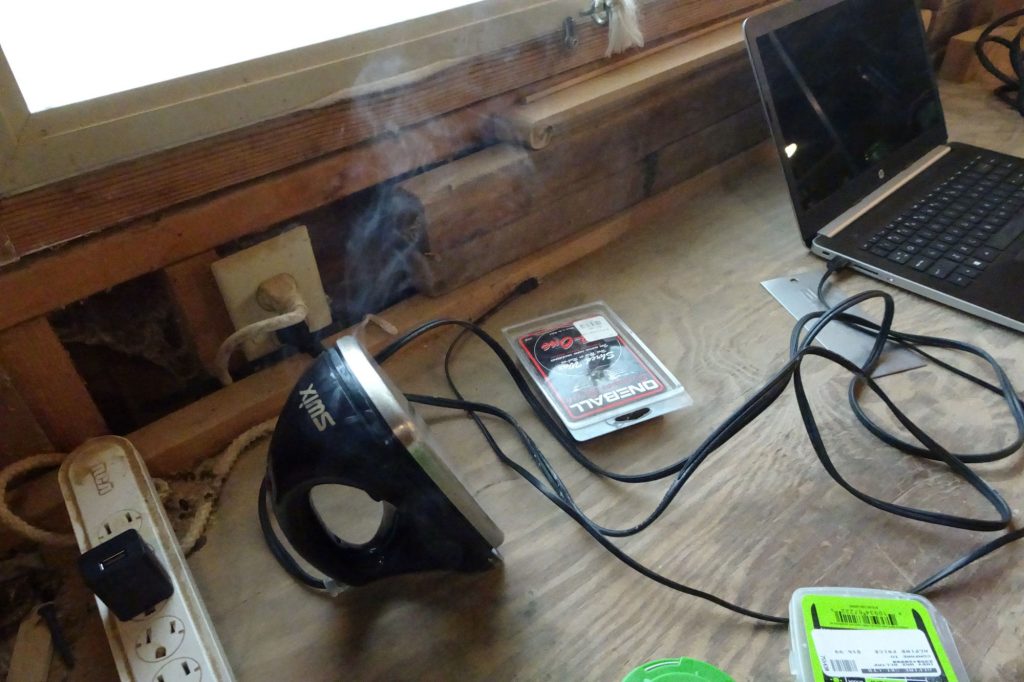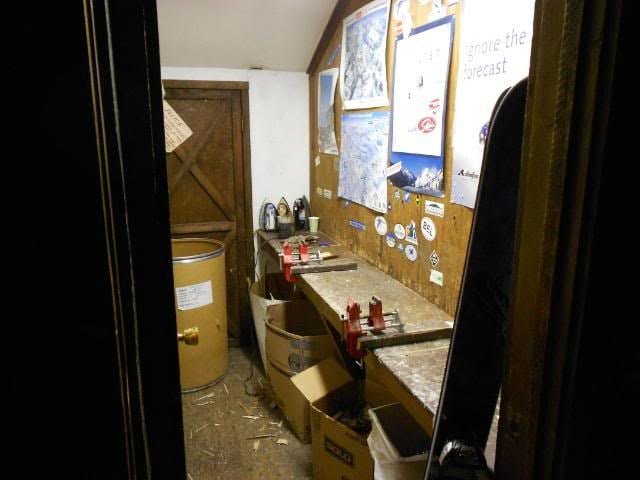During the course of last summer, I made no major ski related purchases, I didn’t even embark on any major projects or alterations of my old equipment. This is unusual for me. My shop, ostensibly for woodworking, is exactly 178.2 miles from the nearest resort; and yet, particularly in August and September, a large section is usually devoted to skis, mounting or moving bindings, templates, questionable DIY improvements, and the execution of dubious ideas that would make Dr Frankenstein proud. Dr Frankenstein, by the way, was well known in the backcountry of the Carpathians and the Transylvanian Alps.

I can’t really say why I took a hiatus from planning and projects last summer; however, it left me with more disposable income to squander this winter and a need to at least do something to improve my equipment as we move toward the heart of the season. A tuning day was in order. So I spread out my dusty skis and noted first that the bases were so neglected that reading the graphic was like peering through gauze, dry as old bones they were; that just handling the rusty edges might have required a tetanus shot except they were too dull to cut warm butter.

A shameful state of affairs, so I dug out wax, scrapers, files and whatever else seemed appropriate.

Tuning day should be a convivial event and so I called an old ski buddy Dave (aka Pagamony on the Message board.) Dave is good company, knowledgeable and fun to be around; Dave also is the owner of an actual wax iron and a much better edge file than my $12 special. A word about irons, your standard clothes iron is an acceptable tool for ski waxing; oddly most do not have a dedicated ski temperature setting but somewhere around cotton or linen works well. However, it must be stressed, if you opt for the home version don’t use the one from your actual home (your neighbor’s, sure.) While I love the smell of ski wax; have since I was 14 and owned my first pair of skis, it is a very particular odor and it WILL be noticed the next time the iron is used as intended on clothing. I’ve also discovered as a woodworker that if I use the one I have for edge taping plywood I can forget paint or finish ever adhering to that surface. As is usually the case, the real tool feels right in your hand and yields better results.

The process of tuning skis in your shop or garage is fairly straight forward and unless you are tuning for the world cup or a multi-day refreeze cycle in Vermont, not much can go wrong. For me it’s a Zen activity and if my edge is not the ideal 2 degrees or I just let the wax fill some gouges instead of p-tex; I’m satisfied nonetheless. Libations are usually involved and that helps to keep my standards flexible. As to the procedure: it’s basically, scrape, file, drip, spread, scrape again and buff.

Having edges sharp enough to engage is a primary reason for tuning; although beware, you may actually have to detune the edges at the front and rear of the ski because a sharp edge there can hook and carry you off in unexpected and unpleasant directions. My early infatuation with tuning skis was based less on carving though than on an obsession with speed; during my early years turning was at best an occasionally necessary evil. I wince now to think of how thoroughly I embodied the stereotype of Texans skiing in the Rockies. Waxing was done primarily for the sake of faster schussing. If you ever sat on a sheet of wax paper to optimize your ride on a long metal slide you grasp the essential role of ski wax.

You can buy some tuning tools at your local shop or at large online retailers, but SlideWright is a great site to check out if you’re going online and don’t want to be channeled straight to the corporate big boys. My photo collage seems a completely adequate guide; succinct, sufficient but perhaps painted in somewhat broad strokes. So, if you are interested in more detail, there are mountains of information online and video tutorials galore. This series from Backcountry is an excellent start.
Ski tuning is a ritual and has a slightly addictive and sacred quality to it. The tools, the smell, the tiny curls of metal from the file, all the details add up to increase your excitement and ownership of your first run on your newly refurbished skis. Even battered old rock skis feel fresh as you run your palm across their newly waxed base. In fact, ski tuning is such an integral experience that you should take it into account when you are choosing accommodations. It’s part of the soul of the sport. And if the ski lodge, hotel or hostel where you stay doesn’t have a dedicated tuning room, you should immediately check out and find one that does. A waxing bench is a sure sign of an establishment’s roots, also the priorities of its owners and of your fellow travelers.

You may not get around to using it, but you catch the scent as you pass down the hall and know you are in a good place. Besides, you will sleep better knowing that you have a well-worn spot close at hand where you can fire up an iron, melt some wax perfectly rated to current conditions, and prepare your skis for what will undoubtedly be your best run ever.
So far.

